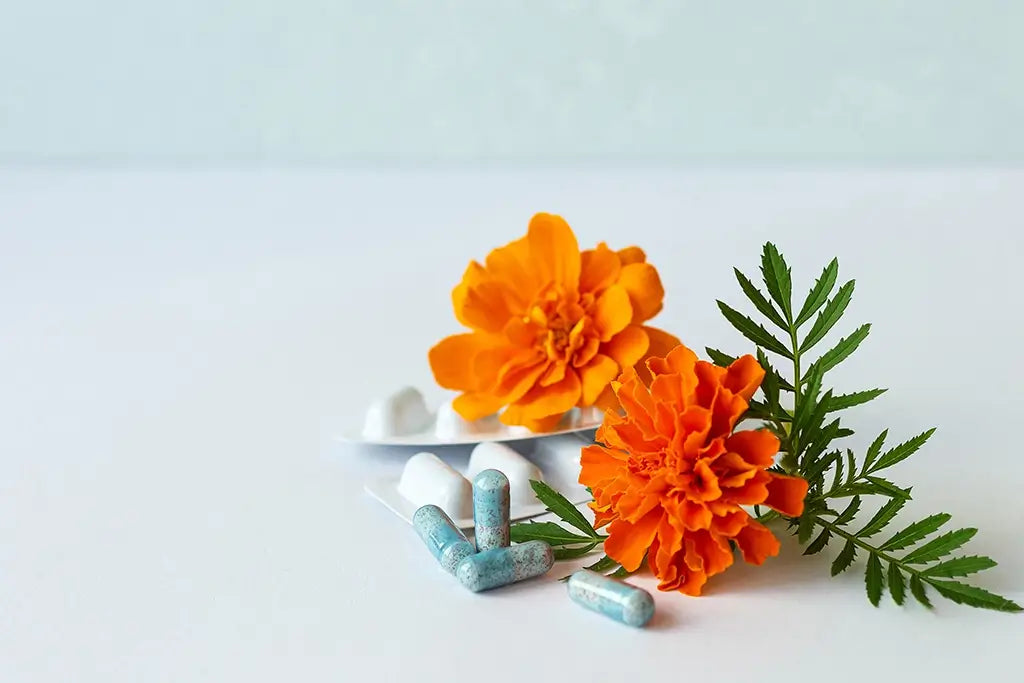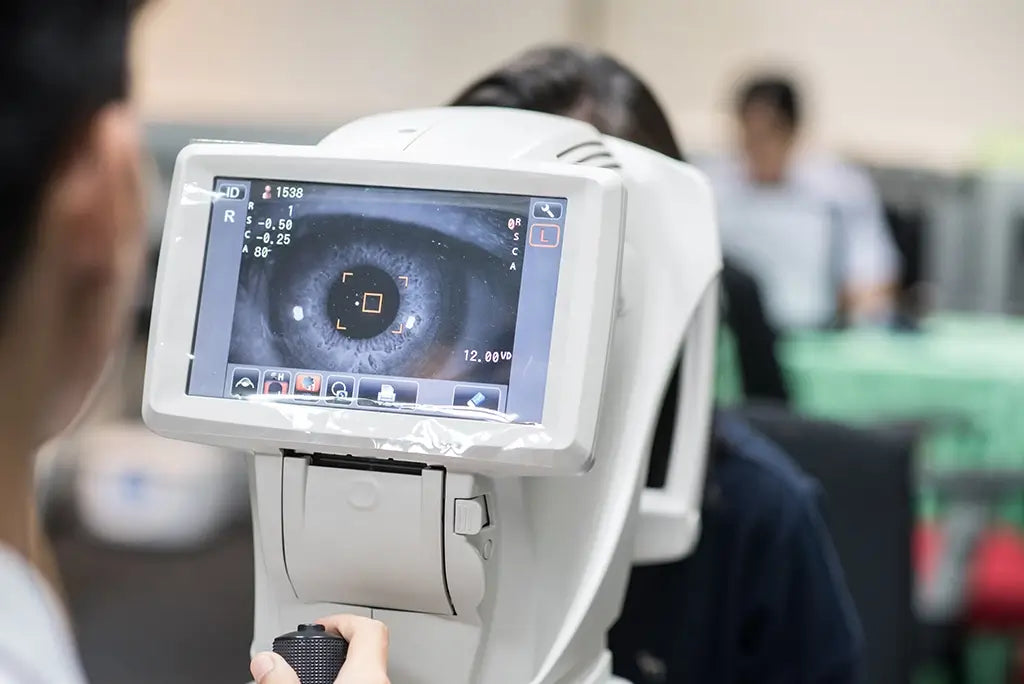Eye and vision health is vital for your well-being and quality of life. It can be hard to understand how important eye health is until you imagine how many things, like driving and reading, rely on you to keep your eyes healthy.
Many things can impact your eye and vision health, such as aging, screen time, and environmental factors. Therefore, it is important to take care of your eyes and vision by adopting healthy habits, consuming essential nutrients, and getting regular checkups.
In this article, we will explore how to optimize your eye and vision health and prevent or delay common eye problems.
Understanding Eye and Vision Health
The eyes are complex organs that work together with the brain to process visual information. The outside layer is the cornea, which helps focus light, maintain the eye’s structure, and protect the eye. Behind it is the iris and the pupil. The iris contains a small muscle that can expand and contract to let in more or less light, like the aperture on a camera, and the pupil is just the hole (like the camera lens) that the light passes through.
Scientists still don’t know why the iris is colored, but some have theorized that dark eyes make it easier to see in bright environments and react quickly, and paler eyes make it easier to see in dim environments and to line things up gradually. However, most scientific studies fail to locate this effect.
Behind the iris is the lens, a transparent structure that changes its shape to fine-tune the focus of light. The lens focuses light onto the retina, which is a thin layer of tissue at the back of the eye. The retina contains millions of light-sensitive cells called rods and cones.
Rods are responsible for night vision and peripheral vision, while cones are responsible for color vision and central vision. Both types of receptors transform light into electrical impulses that are sent to the brain through the optic nerve and then to the visual cortex, the part of the brain that processes visual information. The visual cortex analyzes the signals and creates the images that you see. This is how the eye works in a nutshell.
The eyes are vulnerable to various factors that can affect their function. Some of the most common eye problems include the following:

Everyday Habits for Healthy Eyes
One of the best ways to support your eye and vision health is to adopt healthy habits that can prevent or reduce the risk of eye problems. For example, eating a balanced diet can provide your eyes with the necessary vitamins, minerals, antioxidants, and omega-3 fatty acids that can protect them from oxidative stress. Some of the foods that are especially good for your eyes are carrots, spinach, kale, broccoli, blueberries, salmon, tuna, eggs, nuts, and seeds.
Another healthy habit to save your eyes is to avoid smoking. Smoking can harm your eyes in many ways. Smoking can also affect the blood flow to the eyes, impairing their function. Therefore, quitting smoking or avoiding exposure to secondhand smoke can improve your eye and vision health. It’ll improve your lung health, as well, and have a positive impact on your body overall.
Your eyes can be injured by a number of hazards, such as dust, debris, chemicals, UV rays, or sports equipment. To prevent eye injuries, wear appropriate eye protection, such as sunglasses, goggles, or safety glasses, whenever you are exposed to potential eye hazards.
People who make anything with their hands need to be especially careful and wear protection for everything from welding to router sawdust to angle grinder dust to chemistry experiments. Even if you don’t regularly encounter hazards that require safety goggles, make sure to wear sunglasses — not just for bright sunlight, but to protect you from UV rays, which can damage your eyes.
Your eyes can also be affected by environmental threats. To protect your eye health, follow good hygiene practices, such as washing your hands before touching your eyes, cleaning your contact lenses properly, discarding expired eye products, and avoiding sharing eye makeup or tools with others. If possible, avoid touching your eyes at all — there’s rarely a very good reason to, anyway!

Vitamins and Ingredients That Support Eye Health
In addition to eating a balanced diet, you can also supplement your eye and vision health with specific vitamins and ingredients that have benefits for the eyes.
Vitamin A is the most famous nutrient for eye health. It helps your body maintain the cornea. Vitamin A can be found in animal sources, such as liver, eggs, cheese, and butter, or in plant sources, such as beta-carotene, which is converted to vitamin A in the body. Beta-carotene can be found in orange, yellow, and green vegetables and fruits, such as carrots, sweet potatoes, squash, mangoes, and spinach.
Vitamin C is an antioxidant, protecting the eyes (and the rest of your body) from oxidative stress. It also helps the body to produce collagen, which gives the eye structure. Vitamin C can be found in citrus fruits, such as oranges, lemons, grapefruits, and limes, or in other fruits and vegetables.
Vitamin E is also an antioxidant, and it helps to protect the eyes. Vitamin E can be found in nuts and seeds, such as almonds, sunflower seeds, peanuts, and hazelnuts, or in vegetable oils.
Selenium and zinc are trace minerals. Selenium works together with vitamin E to enhance its effects and also helps keep your thyroid healthy. Zinc is a pigment that may reduce the effects of glare on the eyes. You can find small amounts of selenium in seafood, meat, and grains, but Brazil nuts have the highest concentration. Zinc is also commonly found in meat and grains.
Omega-3 fatty acids have antioxidant and protective effects on the eyes. Many optometrists recommend omega-3 supplements for dry eyes. Omega-3 fatty acids can be found in fish, such as salmon, mackerel, herring, and sardines, or in fish oil supplements. They can also be found in plant sources, such as flaxseeds, chia seeds, and walnuts.
Lutein and zeaxanthin are carotenoids that are concentrated in the macula, the central part of the retina that is responsible for sharp and detailed vision. Lutein and zeaxanthin act as antioxidants, protecting the eyes from oxidative stress and providing blue light eye support. Carotenoids are a class of plant pigments, so these can be found in colorful plants like squash, oranges, and carrots (where the name comes from). You can also find them in leafy greens like spinach and kale, plants like corn, peas, and broccoli, and occasionally in supplements.

Lifestyle Adjustments for Better Vision
As you can see above, food has a major impact on your vision health. Some of the most important sources of nutrients for your eyes are eggs, seafood, nuts, and colorful vegetables. An easy way to get more eggs and veggies is to make an omelet or scrambled eggs and fill it with bright vegetables like peppers and spinach. Nuts are great for a healthy snack, and you can add seafood for dinner once or twice a week.
Limiting screen time is one of the best lifestyle adjustments you can make for your eyes. Spending too much time in front of digital screens, such as computers, smartphones, tablets, or TVs, can cause eye fatigue, dryness, irritation, and blurred vision.
If you can cut out a few hours of screen time a week, you’ll do your eyes a huge favor, but if you work with computers, that’s not always possible. Even at a desk job, though, you can follow the 20-20-20 rule to give your eyes a break: every 20 minutes, look up from the computer to a spot 20 feet away and look at it for 20 seconds.
Getting enough sleep is also important. Sleep allows your eyes to rest and replenish their moisture. Lack of sleep can cause eye problems, such as redness, dryness, and twitching. Conveniently, reducing screen time also helps you sleep, so you are essentially killing two birds with one stone.
Exercising regularly can benefit your eyes in several ways. First, exercise can improve your blood circulation, which can deliver more oxygen and nutrients to your eyes. Second, exercise helps your blood pressure, cholesterol, and blood sugar levels, which keeps your eyes healthy. Third, exercise can help you maintain a healthy weight, which can prevent weight-related eye problems.

Regular Checkups and Tests
Another way to support your eye and vision health is to get regular checkups and tests from your eye doctor. There are a variety of common tests that can help you detect any eye problems early and monitor your eye health. Many tests should be done once every year or two, but they’re usually combined for convenience, so you can do all the tests you need together at one time.
Vision screenings are the most common type of checkup. A basic vision screening involves the famous eye chart, which tests how small of letters you can accurately read from 20 feet away. Other vision screening methods include looking closely at the eye or using a specialized camera. You don’t need to go to an optometrist for a vision screening; they can be done by primary care doctors or even school nurses. You should get a vision screening at least once a year or more often if you have any risk factors or symptoms of vision problems.
A comprehensive eye exam is a thorough evaluation of your eye health and vision that includes a medical history, a visual acuity test, a refraction test, a slit-lamp examination, a dilated eye exam, a tonometry test, and a visual field test. You should get a comprehensive eye exam at least once every two years.
The eye pressure test measures the pressure inside your eye. An eye pressure test can be done by using a device called a tonometer, which can either touch or blow air onto your eye. You should get an eye pressure test at least once a year or more often if you have any risk factors or symptoms.
A color vision test assesses your ability to distinguish different colors, which can indicate the presence of color vision deficiency or color blindness. A color vision test can be done by using a set of colored plates, dots, or numbers that have different patterns or hidden images. You should get a color vision test at least once in your lifetime and repeat it if you appear to be developing color blindness. Color blindness is usually genetic, but it can appear over time in some circumstances.

Conclusion: Supporting Eye and Vision Health
Your eye and vision health is important for your well-being and quality of life. Your eyes allow you to see the world, communicate with others, and perform various tasks. Your vision also affects your learning, memory, and mental health.
However, your eye and vision health can be impacted by many factors, such as aging, screen time, environmental factors. Therefore, it is important to take care of your eyes, and we hope the information in this article can help you maintain your vision.
In this article, you learned about the anatomy and function of your eyes and the causes and symptoms of common eye issues. You also learned about vitamins and other compounds that can support your eye health, such as vitamin A, vitamin C, vitamin E, selenium, zinc, omega-3 fatty acids, and lutein and zeaxanthin. Everyday habits like eating a balanced diet, quitting smoking, and following good hygiene practices can also help you take care of your eyes, along with limiting screen time, getting enough sleep, and exercising regularly. We discussed the wide variety of checkups and tests that can alert you to any dangers or changes to your vision.
By following these tips and advice, you can optimize your eye and vision health and prevent or delay common eye problems. You can also enjoy the benefits of having clear, sharp, and comfortable vision. Remember to take care of your eyes and vision by adopting healthy habits, making sure you get essential nutrients, and getting regular checkups and tests. Your eyes and vision deserve your attention and care. They are your windows to the world and your keys to success!


